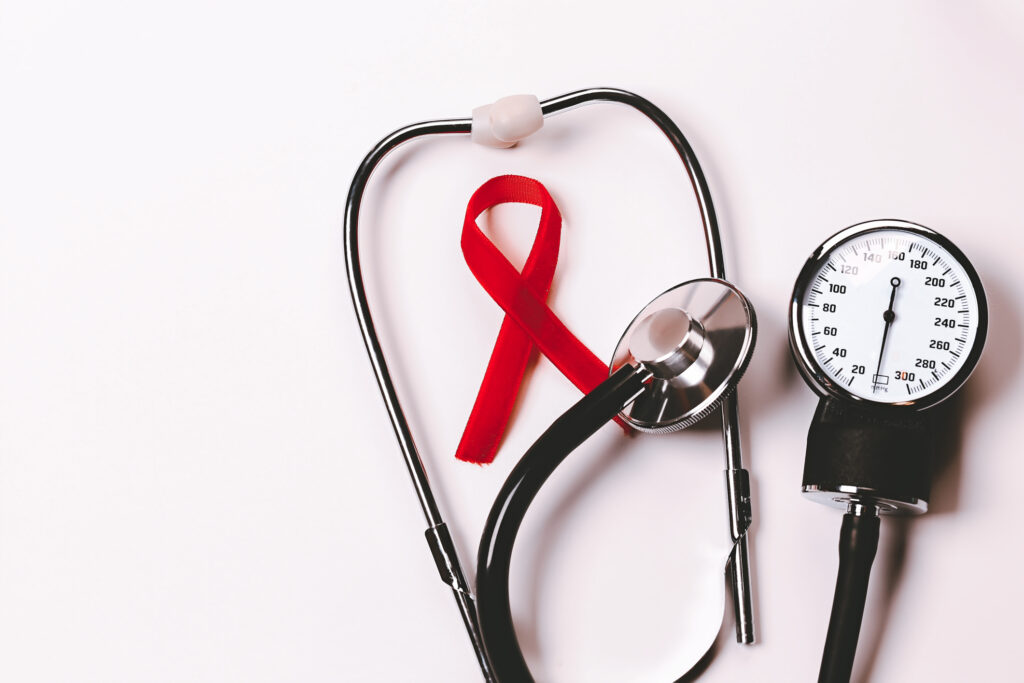I have resisted this topic for as long as I can. But I can’t wait any longer. It’s time to talk about Sexually Transmitted Infections (STIs). Have you seen those frightening articles about skyrocketing cases of STIs in older adults? Or the racy ones about baby boomers going wild with sex? Why does Florida have the highest STI rates in the nation? Spoiler alert: it’s complicated. Rising STI rates may have more to do with a lack of sexuality education and less about seniors going wild about sex. Here’s why I resisted for so long.
Talking solely about STIs without any context seems analogous to what I got in high school that passed for Sex Ed. They told us not to get any of those wretched venereal diseases (with graphic photos). But they didn’t give us any information about what sexual consent or sexual communication meant. A far cry from teaching about pleasure, the joys of discovery, and intimate relationships. Sex Ed in my day was all about what not to do (the negatives) rather than what you might feel (the positives). As a comprehensive sexuality educator in my late 60s, I have struggled to find ways to fill those gaps in my classes by focusing on a balance between the positives and the negatives, trying to give older adults a wider lens through which they can view their own sexual journeys.
Much of my writing here at AgeRight has been about the science of sexual pleasure, shifting the narrative from sexual dysfunction to sexual wellness, reimagining romance in senior living communities, learning how to love our aging bodies, and creating inclusivity for LGBTQ seniors, just to name a few. Having developed the context (and avoiding the topic for so long), I suppose it’s now time to look at STIs and seniors.

So, What Are STIs?
Sexually Transmitted Infections (STIs) are infections spread through sexual contact. They can affect you at any age. And even though some medical professionals may miss or ignore the symptoms of an STI because of their inability to view older adults as sexual beings, STIs are still a concern for many sexually active older adults.
Gather Your Information
STIs are mainly caused by bacteria or by a virus. Some, like chlamydia and gonorrhea, are bacterial and can be treated with antibiotics. Others, like herpes and HPV, are viral and can be managed with antiviral medications or simply by monitoring symptoms over time. If you have any symptoms at all, it’s important to talk with your health care provider and get tested to determine the best treatment for you.
The Difference Between Bacterial and Viral Infections
Once we understand the difference between viral and bacterial infections, we can learn more about how to treat them. Bacterial infections are caused by bacteria, which are single-celled microorganisms (like strep throat, urinary tract infections, TB, and others). You can treat most bacterial infections with antibiotics that are designed to target and eradicate bacteria. Many people have taken antibiotics in the past and it’s important to remember to take them for the full dosage, even if you begin to feel healthy again. It’s also important to make sure your partner (or partners) are treated as well. Be sure to ask your healthcare provider how long to wait before resuming sexual activity so you don’t inadvertently get reinfected.
Viral infections are caused by viruses, which are tiny infectious agents that can duplicate themselves inside living cells (like the common cold or flu). Unfortunately, viral infections cannot be treated with antibiotics, since antibiotics only work on bacteria. Your body’s immune system can sometimes fight off the virus, but antiviral medications may be needed to help manage persistent viral infections.

HIV is Now Treatable and Preventable
Let’s look at HIV, a sexually transmitted viral infection which causes AIDS and damages your immune system, the system our bodies use to defend against infections. Back in the 1980s, getting an AIDS diagnosis was often seen as a terminal illness. This was before any antiretroviral medications were developed. HIV is now a manageable and treatable virus.
Most often, HIV is transmitted through unprotected penetrative sex. You can also contract HIV through blood, semen, vaginal fluids, sharing IV needles, and breast milk. Early in the HIV/AIDS crisis, being HIV positive was seen as untreatable. Those who tested positive could always transmit the virus. However, with antiretroviral therapy, most individuals can reduce the virus to undetectable levels. The National Institutes of Health has deemed that if your virus levels are undetectable, it means that the virus is not transmittable. This has been revelatory for many older adults, particularly older gay men, who have felt isolated and often stigmatized because of their HIV positive status. Antiretroviral therapy has allowed many people with HIV to live longer, healthier sexual lives.
Which STIs are Most Prevalent in Older Adults?
Although most STIs occur in younger populations, the number of cases in older adult populations has increased dramatically. The Centers for Disease Control and Prevention (CDC) estimates that there are over 68 million people in the US living with an STI. And the number is growing among older adults. The CDC also estimates that the rates of chlamydia, gonorrhea, and syphilis have doubled among those 65 and over in the past 10 years. While most cases of sexually transmitted infections are asymptomatic (which is why many people are unaware of the infection), they may also cause the following symptoms:
- Chlamydia: A bacterial infection that may cause discharge, burning during urination, and other symptoms.
- Gonorrhea: A bacterial infection that may cause symptoms similar to chlamydia.
- Herpes Simplex Virus (HSV): A viral infection that may cause painful blisters or sores on genitals or mouth.
- Human Papillomavirus (HPV): A viral infection that may cause genital warts.
- Syphilis: A bacterial infection that may cause rash, fever, muscle aches, and other symptoms.
How STIs are Transmitted
STIs can be transmitted through vaginal, oral, and anal penetration as well as skin-to-skin contact. Chlamydia, gonorrhea, HPV, HSV, and syphilis are all transmitted through vaginal, oral, and anal penetration. HSV, HPV, and syphilis can also be transmitted through skin-to-skin contact (even if the partner is unaware of an infection).
What Can You Do to Prevent STIs
While STIs continue to be a major public health concern, most are quite preventable. Wearing a form of protection when you are having any type of penetration (ie, condom, dental dam, female condom) can provide protection from most types of transmission. Many older adults have reported that they do not use barrier protection because they see condoms only as a protection against an unwanted pregnancy. And if you have any question about having an STI, get yourself tested. Your health care professional may not ask you, so be proactive and speak up for yourself. Testing and barrier protection are vital to preventing STIs and they are important at any age.

Common Misconceptions
Contrary to what you might read on the internet, you will not get any of these diseases from toilet seats, bedding, swimming pools, or from touching silverware, soap, or towels. If you do contract an STI, it does not mean your sexual life is over. On the contrary, although not all of these diseases are curable, they are all treatable. And dealing with an STI might be more concerning because of the discomfort of the shame attached to it rather than the discomfort of the disease itself.
Tackling the Shame
It’s really important to remember that having an STI or even talking about an STI can be a very sensitive issue to talk about, especially if you are with someone new or you don’t know each other very well. Feeling ashamed or embarrassed about an STI can keep people from being honest. If there is someone you are interested in having a sexual relationship with, sit down with them and let them know that you are a safe person to be honest with. Let them know you are not going to judge them. And remind them that STIs are very common, even among older adults.
Promoting Safer Sex Can Improve Health for All
If you are a health care provider, you can help to reduce the shame and stigma by being candid and by providing resources like this blog for your older patients and clients. Your willingness to talk about STIs openly with empathy and understanding can help tackle the shame and increase awareness. Ultimately, STI prevention is about being able to make informed choices. It is empowering to be able to have a conversation about STIs at any age and especially important for older adults who may feel isolated and alone already. Your sexual well-being is important. By promoting safer sex, we can reduce the increase in STIs and improve overall health for everyone.
What to do if you think you have an STI:
- Talk to your partner.
- Ask your healthcare provider for a test.
- If your test is positive, you and your partner should complete any recommended treatment and ask your healthcare provider how long to wait before resuming sexual activity.
- Remember, the best way to reduce those feelings of embarrassment and shame is to talk honestly.


 Dr. Jane Fleishman
Dr. Jane Fleishman